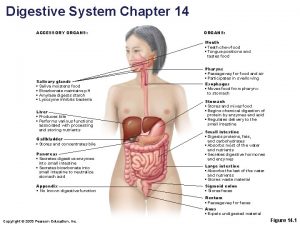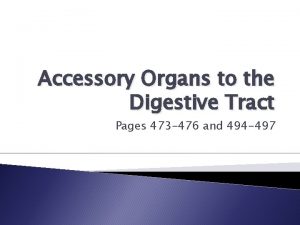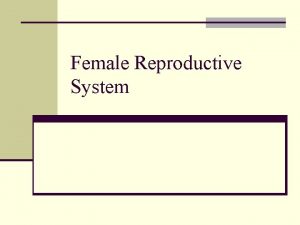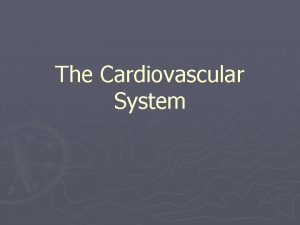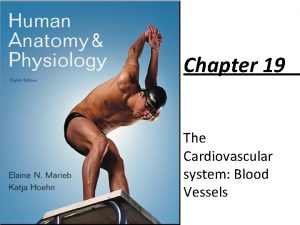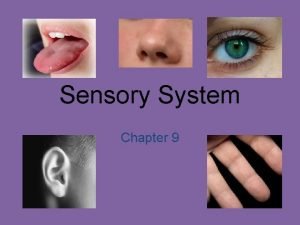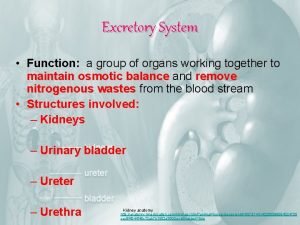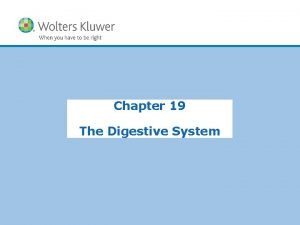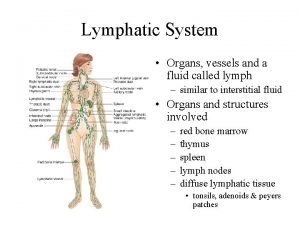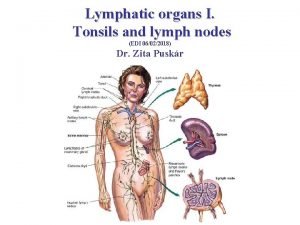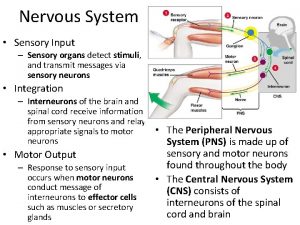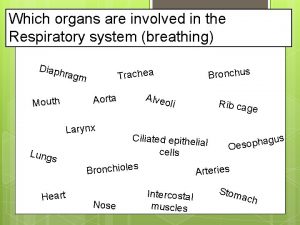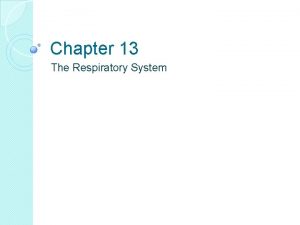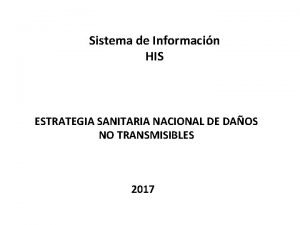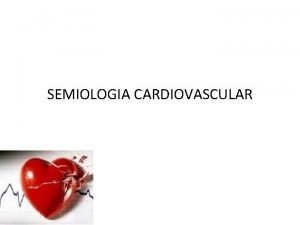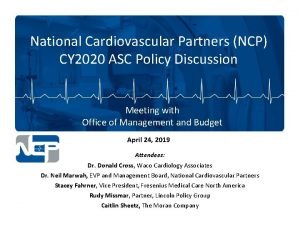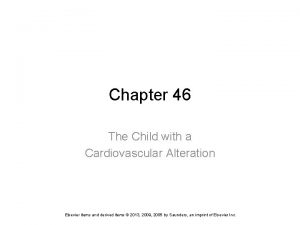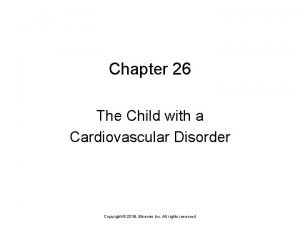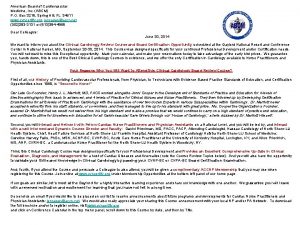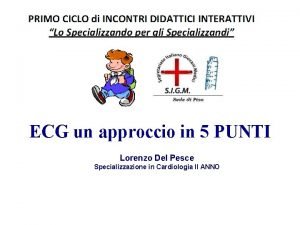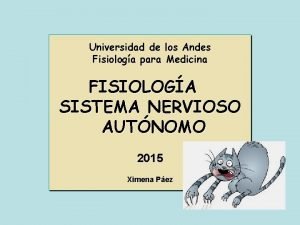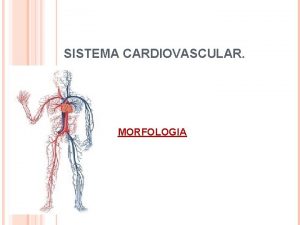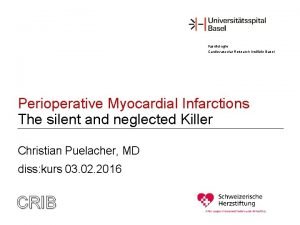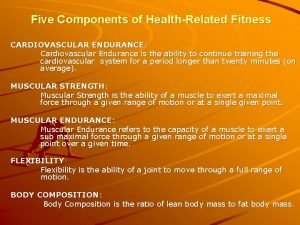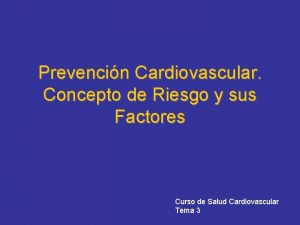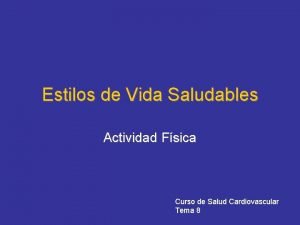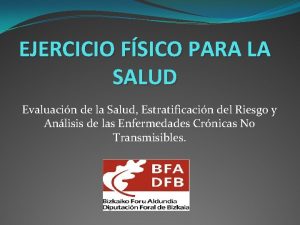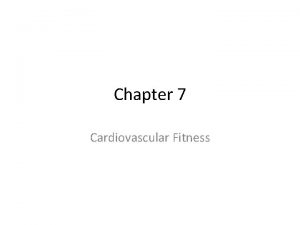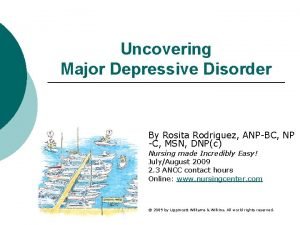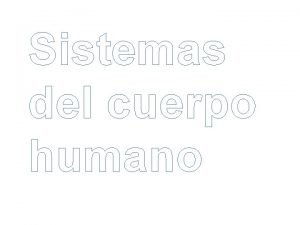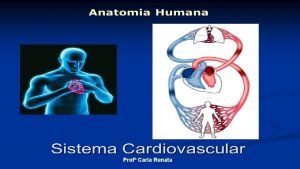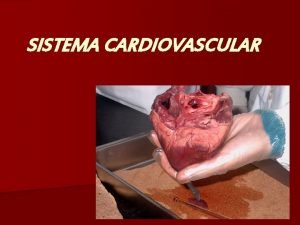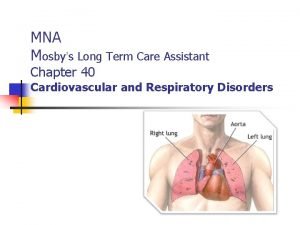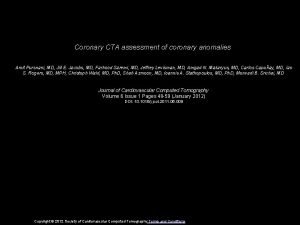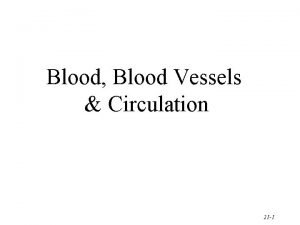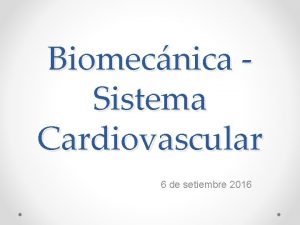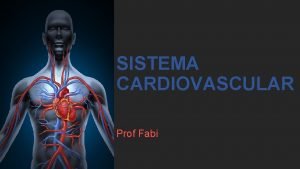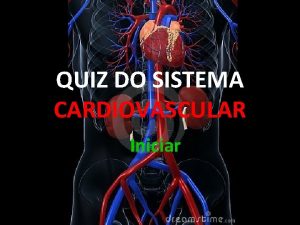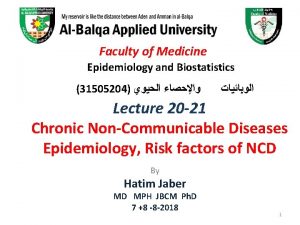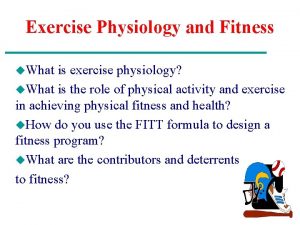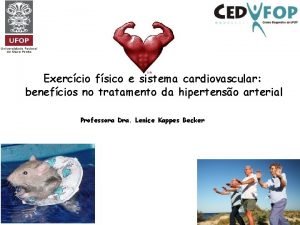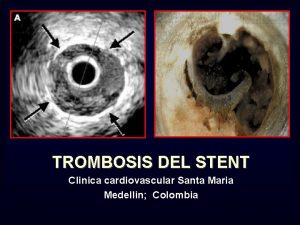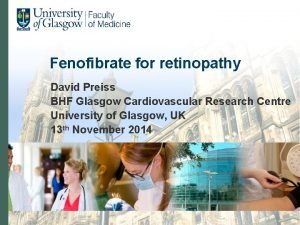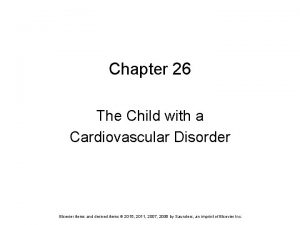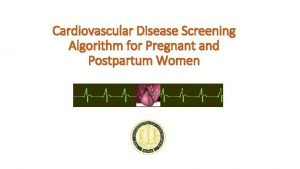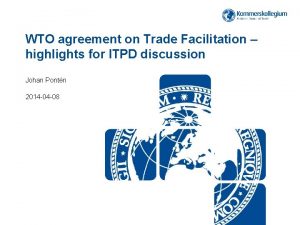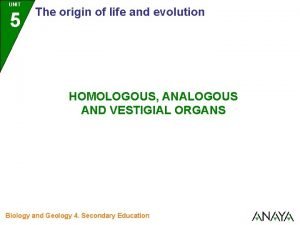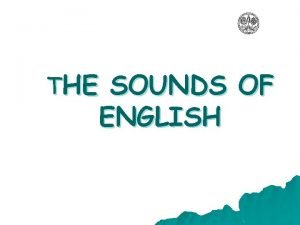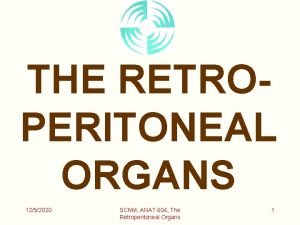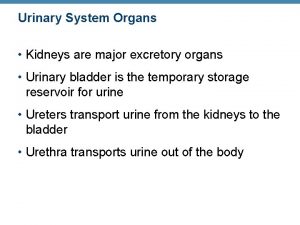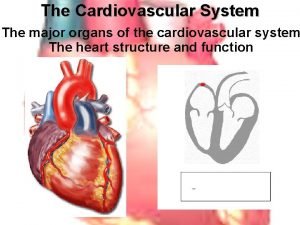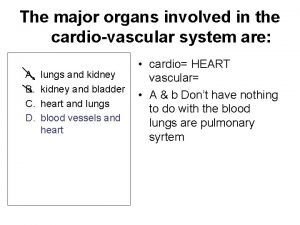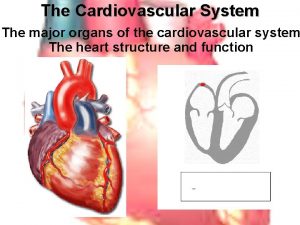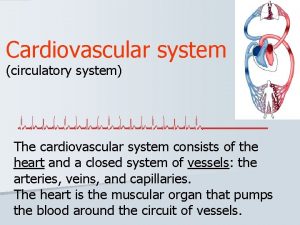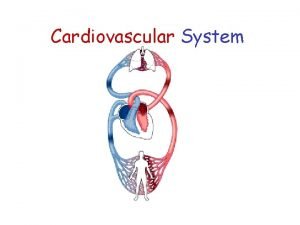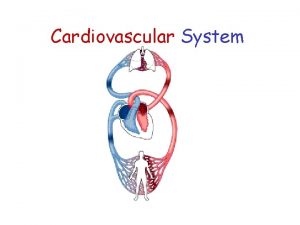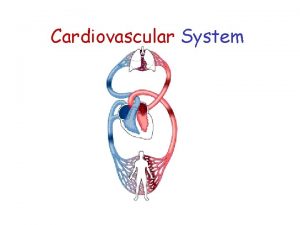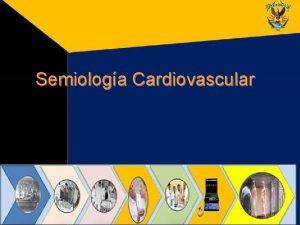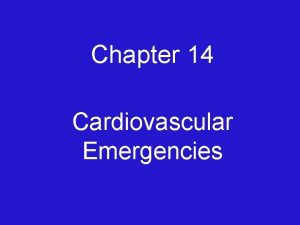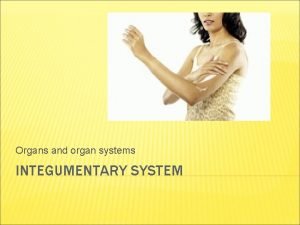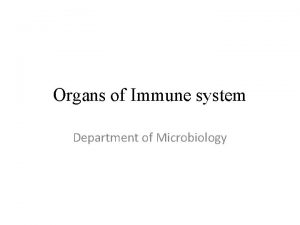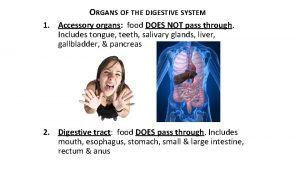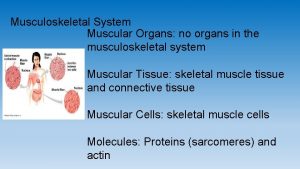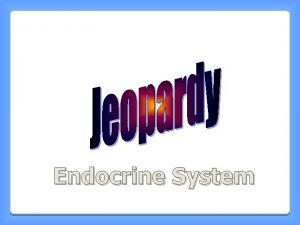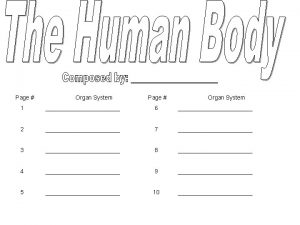The Cardiovascular System The major organs of the














































































- Slides: 78

The Cardiovascular System The major organs of the cardiovascular system The heart structure and function

After today you should be able to: For more help: Chapter 13 pp. 329364 1. Name the organs of the cardiovascular system and discuss their functions. 2. Name and describe the locations and functions of the major parts of the heart. 3. Trace the pathway of the blood through the heart and the vessels of the coronary circulation.

The Heart • In the course of a lifetime, a human heart can beat over two billion times. • Composed of cardiac muscle tissue

The Heart • The heart is divided into four chambers: – The LEFT and RIGHT ATRIA – The LEFT and RIGHT VENTRICLES • There are four distinct valves. • The valves actually that creates the beating sound of the heart.

Major organs of the cardiovascular system • The heart – located in the Thoracic cavity, medial, close to the left lung, and rests on the diaphragm • Arteries – strong elastic vessels that carry blood away from the heart. • A common misconception is that all arteries carry oxygen-rich blood.

Major organs of the cardiovascular system • Veins- carry blood back to the atria of the heart following pathways that are almost parallel to the arteries.

The Heart • The four chambers:

The Heart: Right Side… • The valves:

Superior Vena Cava The superior vena cava veins bringing de-oxygenated blood from the upper body to the heart and empties into the right atrium. What is meant by deoxygenated blood? Why is the blood deoxygenated?

Why is the blood de-oxygenated? • The oxygen that • During cell diffused from the respiration, the O 2 alveoli into the binds to a carbon, blood gets delivered and is now CO 2. to the cells of the • CO 2 diffuses into body. the blood stream • Inside the cell, the and flows back to mitochondria uses the heart. the O 2 for cellular respiration.

Inferior Vena Cava • vein bringing de-oxygenated blood from the lower body to the right atrium of the heart.

Right Atrium • receives deoxygenated blood from the body through the superior vena cava and inferior vena cava.

Tricuspid Valve • separates the right atrium from the right ventricle. • It opens to allow the deoxygenated blood from the right atrium to flow into the right ventricle and prevents blood from returning to the right atrium.

Right Ventricle • receives de-oxygenated blood from the right atrium and pushes it next through the pulmonary valve.

Pulmonary Valve • separates the right ventricle from the pulmonary artery. • Allows blood to flow from the Right ventricle to the pulmonary arteries.

Pulmonary Artery • is the vessel transporting deoxygenated blood from the right ventricle to the lungs.

Summarize what we know so far: ANSWER THE FOLLOWING QUESTIONS: 1. Where does deoxygenated blood originate from? 2. Where in the heart does the deoxygenated blood enter first? 3. Where does the deoxygenated blood go next? 4. What two valves are on the right side of the heart? What are the roles of these 2 valves? 5. Where does blood exit and go to from the right side of the heart? –Is it de-oxygenated (oxygen poor) or oxygenated (oxygen rich)?

The Heart: Left side • Brings oxygenated (oxygen rich blood) from the lungs to the heart. • Begins with the Pulmonary Vein.

Pulmonary Vein • is the vessel transporting oxygen-rich blood from the lungs to the left atrium.

Left Atrium • receives oxygenated blood from the lungs through the pulmonary vein.

Bicuspid Value • separates the left atrium from the left ventricle. • It opens to allow the oxygenated blood to flow into the left ventricle and prevents it from flowing back.

Left Ventricle • receives oxygenated blood as the left atrium contracts and the bicuspid valve opens.

Aortic Valve • separates the left ventricle from the aorta. • As the ventricles contract, it opens to allow the oxygenated blood collected in the left ventricle to flow throughout the body and prevents it from going back to the heart.

Aorta • is the largest single blood vessel in the body. • This vessel carries oxygenrich blood from the left ventricle to the various parts of the body.

Summarize what we know so far: ANSWER THE FOLLOWING QUESTIONS: 1. Where does oxygenated blood originate from? 2. Where in the heart does the oxygenated blood enter first? 3. Where does the oxygenated blood go next? 4. What two valves are on the left side of the heart? What are the roles of these 2 valves? 5. Where does blood exit and go to from the left side of the heart? –Is it de-oxygenated (oxygen poor) or oxygenated (oxygen rich)?

Blood flow through the body

Cardio-respiratory connection is the vessel transporting de-oxygenated blood from the right ventricle to the lungs. This blood flows to the pulmonary capillaries that are wrapped around the alveoli.

Cardio-respiratory connection There is the diffusion of CO 2 from the pulmonary capillaries into the alveoli At the same time there is the diffusion of O 2 from the alveoli into the pulmonary capillaries.

Cardio-respiratory connection is the vessel transporting oxygenrich blood from the lungs to the left atrium.

The Heart

The Heart

Heart Activities: 1. Finish cardiovascular diagram and organ chart. 2. Create Heart Foldable 3. Vocab Index Card Blood flow order activity

As a group of 4: • With the construction paper: Create the heart. • Show the major organs that we discussed (arteries, veins, valves, chambers, etc) • Show the pathway that blood takes • Make sure the red and blue construction paper are in the correct location for oxygenated and deoxygenated. • Use the white and black construction paper to show where CO 2 is and goes and where O 2 is and goes. • The shape needs to look similar to the actual heart.

Electrical Conduction Pathway: Be Still My Beating Heart

The Lub-Dub… • Heartbeat is the sound you hear when the valves of the heart close. • Each heartbeat is called a cardiac cycle. • Controlled by the electrical conduction pathway • First the Atria contract at the same time sending the blood to the ventricles. • Then the ventricles contract at the same time sending blood to the pulmonary artery or the aorta. • http: //www. youtube. c om/watch? v=v 3 b. Yh. Zm. Qu 8

The Lub-Dub… • Systole is the working phase of the heart – when the chambers contract. • Diastole is the relaxing phase of the heart – when the chambers are resting.

The Lub-Dub… • Lub – is the sound you hear when the blood pressure increases in the ventricles forcing the tricuspid and bicuspid valves to slam shut but causing the pulmonary and aortic valves to open. • Dup – the relaxation of the ventricles causes blood to flow backward momentarily and the pulmonary and aortic valves close.

Murmurs… • Swishing sound after the lub • Leaky valves allows blood to flow back into the atrias. • The two types of heart murmurs are innocent (harmless) and abnormal.

Murmurs… • Innocent murmurs are simply sounds made by blood flowing through the heart's chambers and valves, or through blood vessels near the heart. • Congenital heart defects or acquired heart valve disease often are the cause of abnormal heart murmurs.

Electrical Conduction Pathway: Be Still My Beating Heart

Sinoatrial Node (often called the SA node or sinus node) • serves as the natural pacemaker for the heart. • Nestled in the upper area of the right atrium, it sends the electrical impulse that triggers each heartbeat. • The impulse spreads through the atria, coordinated wave-like manner.

Atrioventricular node (or AV node) • The impulse that originates from the SA node strikes AV node • situated in the lower portion of the right atrium. • The AV node in turn sends an impulse through the nerve network to the ventricles to contract.

Right and Left Bundle Branches. • electrical network serving the upper ventricles • These nerve fibers send impulses that cause the cardiac muscle tissue to contract.

Purkinje Fibers • electrical network serving the lower ventricles • These nerve fibers send impulses that cause the cardiac muscle tissue to contract.

Electrical Conduction Pathway:

Electrical Conduction Pathway: • The SA Node to the AV Node to the left and right Bundle Branches - to the Purkinje Fibers = THE HEART BEAT and CONTRACTIONS


BLOOD • Blood is a mixture of Cells and Plasma • The heart pumps blood through arteries • Blood carries oxygen to the body and wastes away from the body.

Blood Cells: Contains 3 types of Cells: • RED BLOOD CELLS • WHITE BLOOD CELLS • PLATELETS

Blood Cells: Identify the components: Red blood cells platelets white blood cell plasma

Red Blood Cells: Erythrocytes • Biconcave discs that allows it to transport gases • Hemoglobin binded to oxygen gives it the red color. • RBC count for adults is: 4 -6 million cells per mm 3 • 120 day life span • Made in the bone marrow

White Blood Cells: Leukocytes • Protect against disease • Part of the Immune system • Twice the size of red blood cells. • WBC count: 4 -10 thousand During an infection this number increases rapidly. After the infection goes back to normal.

Platelets: Platelets Thrombocytes • Only fragments of cells (not full cells). • Their main function is in blood clotting. • Ten day life span • VERY SMALL! • Platelet cell count: 100 thousand

Plasma: Plasma • Clear yellowish fluid • Milky color when diet has a lot of lipids and fats. • 90% is made of water • 10% salts, minerals and nutrients dissolved in the plasma needed by your cells. • Also contains, CO 2, waste material, hormones, proteins, and sugars • Transports the cells.

Blood Typing: • Four main types of blood: __A__ __B__ __AB__ __O__ • Different proteins found on the RBC and determine the blood type. • You can also be Negative or Positive • Blood type is a Genetic Factor.

Blood Type is Genetic: • Each of us has two ABO blood type alleles, because we each inherit one blood type allele from our biological mother and one from our biological father. • A description of the pair of alleles in our DNA is called the genotype.

Blood Type is Genetic and the Rh Factor! • A and B alleles are dominant. • O is recessive. To be type O blood you must have OO or two O alleles. • Someone who is "Rh positive" or "Rh+" has at least one Rh+ allele, but could have two. Their genotype could be either Rh+/Rh+ or Rh+/Rh-. Someone who Rhhas a genotype of Rh-/Rh-.

Finding blood types: • If mom is blood type A and dad is blood type B- with your table hypothesize what possible types the children could be. Now all you MOM Possible types Dad possible types have to do is AO BO genetics: Punnett Squares!! AA BB

Four options: Alleles B O A B O B B A A O Alleles B B Alleles A A A O

Blood Type and Genetics Practice: Work out the following problems: show your work on the back of this sheet: 1. What are the possible blood types of children if Mom is Type AA, and Dad is Type AB? 2. What Blood type(s) could mom be if Dad is Type B and their children are either Type O or Type B? 3. What are the possible blood Alleles A B types of children if mom is Type AB and dad is Type A? O 4. Finish this punnett square and tell me the possible blood types: O

How do you know who can donate to who? • By the antigens and antibodies located on the Red blood cell and in the plasma

Blood type A Blood type B Blood type AB Blood type O A Antigens B Antigens AB Antigens No Antigens Antibodies in the plasma

Blood Transfusions: • The transfusion will work if a person who is going to receive blood has a blood group that doesn't have any antibodies against the donor blood's antigens But if a person who is going to receive blood has antibodies matching the donor blood's antigens, the red blood cells in the donated blood will clump

What about the Negative or Positive factor? • That is called the Rh Factor. You are either Rh – or Rh + • This works the same way as the antigens and antibodies. • If you are Rh + you have the Rh antigen on your red blood cells. (which means you do not have the antibody in your plasma) • If you are Rh- you do not have the Rh antigen on your RBCs, BUT you Can have the Rh antibody in your plasma.

So what does all this mean? 1. When a certain blood type donates to another blood type, the antibodies and antigens can NOT aggulate (or clump together) 2. If they clump together these two types CAN NOT donate to each other! 3. The blood clumps and makes it difficult to pass through the blood vessels forming blood clots!

Blood Typing activity • Lets try and see who can donate and receive blood from whom.

Here is what happens: • If Type B gives to Type A: • Why did type A blood clump together? Because Type B has anti-A antibodies and they fit with the antigens on type A causing it to clump!

Blood Mixing Lab • With a partner work through the blood typing lab. Alleles & Antibodies O anti-A anti-B B anti-A AB None O None A Clump None B Clump None AB Clump None

Lets review Blood Types With your partner answer the following questions: 1. Who can Type A donate to? 2. Can Type B donate to Type AB? Why? 3. Which Type is considered the Universal Donor (Can donate to everyone)? 4. Which Type is considered the Universal Recipient (Can receive from everyone)?

Blood Donators and Receivers? Red blood cell Antigens TYPE A Blood Antigen A TYPE B Blood Antigen B TYPE AB Blood Antigens A and B Type O Blood No Antigens Plasma Antibodies None Blood Recipient (Receiving the blood) Blood Donor (Donating blood) Type A Type O Type AB Type O Type B Type AB Type O Type AB Type A Type B Type AB Type O

Blood Diseases: Problems of RBC Anemia Low iron or hemoglobin Person feels tired, weak & short of breath Cure: Add iron to diet

Sickle Cell Anemia Genetic disease RBC are sickle shaped RBC can’t pass through capillaries well Blood clots, lack of oxygen to cells. Can be deadly

Blood Diseases: Problems with White Blood cells: • Normal White blood cells help to ____________. • When there is an injury or invasion of bateria/virsus the number of WBC’s _______ in that area. • WBC’s numbers go back to normal after fighting off the infection.

WBC disease: Leukemia • • • Blood cancer WBC count increases abnormally Usually increases to 73 k or above #’s don’t decrease after time Leukemia WBC’s don’t fight infections Bone marrow is busy making “bad” WBC instead of RBC, which leads to a lack of oxygen

Blood Diseases: Problems of Platelets Bruises • • Platelet number is low • Blood clots can’t form • Genetic disease • Small black and blue • Platelets don’t marks contain a chemical that starts clotting • Trouble clotting blood when injured

Blood Vessels disease: • Atherosclerosis • Plaque builds up in the arteries that supply O 2 to the heart. • Can cause a heart attack because blood flow is blocked from getting to the heart. • Caused mainly by ______.

Counting Blood cells to determine disease packet/lab.

Monday 11/22/10 Review Tuesday 11/23/10 TEST!! • Review activities: – Vocab card activity for heart blood flow. (the order blood flows through the heart and the structure of the heart) – Draw the heart and label all of the components on red and blue paper in a group. – Blood typing review with cut outs – Draw a diagram showing how respiratory works with Cardio Sam’s white boards.
 Function of the organs in the digestive system
Function of the organs in the digestive system Accessory organ of the digestive system
Accessory organ of the digestive system Main function of major organs
Main function of major organs Plant organs
Plant organs True capillaries
True capillaries What makes up the cardiovascular system
What makes up the cardiovascular system Cushing reflex
Cushing reflex Cardiovascular/lymphatic system it's totally tubular
Cardiovascular/lymphatic system it's totally tubular Blood vessels crash course
Blood vessels crash course Chapter 5 the cardiovascular system
Chapter 5 the cardiovascular system Chapter 11 the cardiovascular system figure 11-3
Chapter 11 the cardiovascular system figure 11-3 Figure 11-12 is a diagram of a capillary bed
Figure 11-12 is a diagram of a capillary bed Lesson 11 cardiovascular system
Lesson 11 cardiovascular system Lesson 11 cardiovascular system
Lesson 11 cardiovascular system The circulatory system includes
The circulatory system includes Chapter 11 the cardiovascular system
Chapter 11 the cardiovascular system Introduction of cardiovascular system
Introduction of cardiovascular system Ptca
Ptca Anatomy and physiology unit 7 cardiovascular system
Anatomy and physiology unit 7 cardiovascular system Chapter 8 cardiovascular system
Chapter 8 cardiovascular system Chapter 13 cardiovascular system
Chapter 13 cardiovascular system Chapter 11 the cardiovascular system figure 11-2
Chapter 11 the cardiovascular system figure 11-2 The cardiovascular system includes the
The cardiovascular system includes the Cardiovascular system
Cardiovascular system True capillaries
True capillaries Sensory system organs
Sensory system organs Excretory system functions
Excretory system functions Accessory organs of the digestive system
Accessory organs of the digestive system Spleen function
Spleen function Lymphatic system organs
Lymphatic system organs Lingual tonsil
Lingual tonsil Largest lymphoid organ
Largest lymphoid organ Organs of the sensory system
Organs of the sensory system Which organs are involved in respiratory system
Which organs are involved in respiratory system Chapter 13 respiratory system
Chapter 13 respiratory system Chapter 16 endocrine system
Chapter 16 endocrine system Riesgo cardiovascular por perimetro abdominal
Riesgo cardiovascular por perimetro abdominal Soplo protosistolico
Soplo protosistolico Rias cardiovascular
Rias cardiovascular National cardiovascular partners
National cardiovascular partners When does stroke volume increase
When does stroke volume increase Chapter 46 the child with a cardiovascular alteration
Chapter 46 the child with a cardiovascular alteration The child with a cardiovascular disorder chapter 26
The child with a cardiovascular disorder chapter 26 Chapter 25 assessment of cardiovascular function
Chapter 25 assessment of cardiovascular function American board of cardiovascular medicine
American board of cardiovascular medicine Life
Life Centro cardiovascular
Centro cardiovascular Vasos sanguineos
Vasos sanguineos Cardiovascular research institute basel
Cardiovascular research institute basel What is cardiovascular endurance in health related fitness
What is cardiovascular endurance in health related fitness Salud cardiovascular
Salud cardiovascular Health related fitness grade 7
Health related fitness grade 7 Salud cardiovascular
Salud cardiovascular Cuestionario aha/acsm
Cuestionario aha/acsm Fitness chapter 7
Fitness chapter 7 Chapter 17 cardiovascular emergencies
Chapter 17 cardiovascular emergencies Rosita rodriguez
Rosita rodriguez Glandula que produce insulina
Glandula que produce insulina Sistema cardiovascular
Sistema cardiovascular Grande e pequena circulação
Grande e pequena circulação Cardiovascular disorders
Cardiovascular disorders Prairie cardiovascular consultants springfield il
Prairie cardiovascular consultants springfield il Amit pursnani
Amit pursnani Blood vessels
Blood vessels Sistema cardiovascular sus partes
Sistema cardiovascular sus partes Foto do sistema cardiovascular
Foto do sistema cardiovascular Sistema cardiovascular quiz
Sistema cardiovascular quiz Cardiovascular disease risk factor
Cardiovascular disease risk factor Isotonic exercise physiology
Isotonic exercise physiology Sistema cardiovascular
Sistema cardiovascular Clinica cardiovascular santa maria
Clinica cardiovascular santa maria Ventriculos
Ventriculos Bhf glasgow cardiovascular research centre
Bhf glasgow cardiovascular research centre The child with a cardiovascular disorder chapter 26
The child with a cardiovascular disorder chapter 26 Cmqcc cardiovascular toolkit
Cmqcc cardiovascular toolkit Itpd
Itpd Homologous structures
Homologous structures English vowel sounds
English vowel sounds Primary and secondary retroperitoneal organs
Primary and secondary retroperitoneal organs
